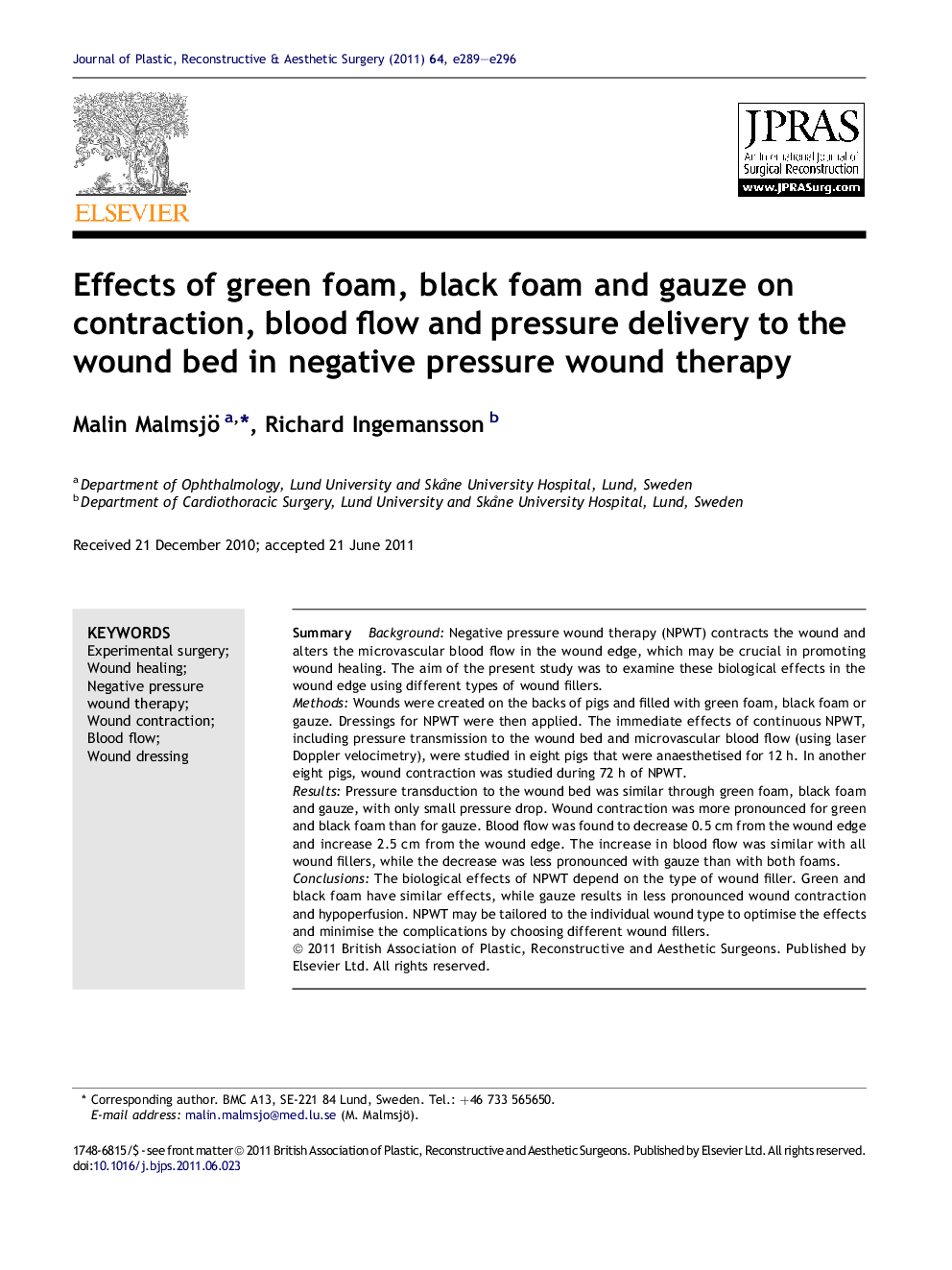| Article ID | Journal | Published Year | Pages | File Type |
|---|---|---|---|---|
| 4118892 | Journal of Plastic, Reconstructive & Aesthetic Surgery | 2011 | 8 Pages |
SummaryBackgroundNegative pressure wound therapy (NPWT) contracts the wound and alters the microvascular blood flow in the wound edge, which may be crucial in promoting wound healing. The aim of the present study was to examine these biological effects in the wound edge using different types of wound fillers.MethodsWounds were created on the backs of pigs and filled with green foam, black foam or gauze. Dressings for NPWT were then applied. The immediate effects of continuous NPWT, including pressure transmission to the wound bed and microvascular blood flow (using laser Doppler velocimetry), were studied in eight pigs that were anaesthetised for 12 h. In another eight pigs, wound contraction was studied during 72 h of NPWT.ResultsPressure transduction to the wound bed was similar through green foam, black foam and gauze, with only small pressure drop. Wound contraction was more pronounced for green and black foam than for gauze. Blood flow was found to decrease 0.5 cm from the wound edge and increase 2.5 cm from the wound edge. The increase in blood flow was similar with all wound fillers, while the decrease was less pronounced with gauze than with both foams.ConclusionsThe biological effects of NPWT depend on the type of wound filler. Green and black foam have similar effects, while gauze results in less pronounced wound contraction and hypoperfusion. NPWT may be tailored to the individual wound type to optimise the effects and minimise the complications by choosing different wound fillers.
